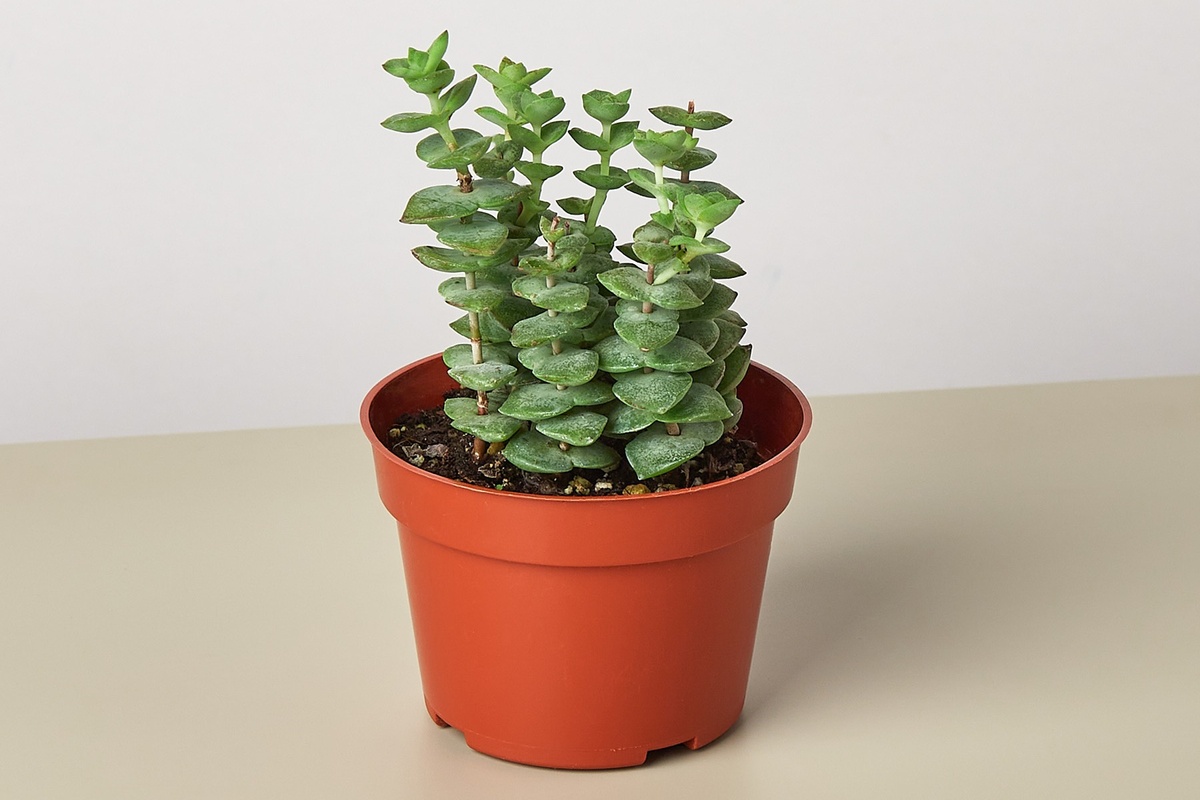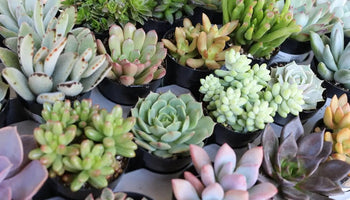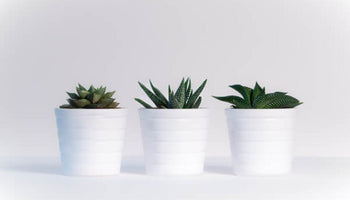How Often Should You Water Succulents?
Updated by Taylor Tobin
The appeal of succulents is easy to understand: they’re beautiful, they’re easy to match with different decor schemes, and they’re relatively low-maintenance, which means that even the not-so-green-thumbed among us can likely keep these plants alive and thriving. That said, it’s important to know when it’s time to water your succulents and when said succulents have had more than their fill of H2O.
We consulted Anna Dicks, an expert grower who works with** My Garden Box **, to find out exactly how often succulents should be watered and how to tell if you’ve overwatered these plants.

How often should succulents be watered?
According to Dicks, there isn’t an easy one-size-fits-all answer to the question of how often to water succulents . “Your watering routine can vary for each succulent you have in your collection. The amount of light, the size of the container, the health and fullness of the root system, the time of year, and the type of succulent can all influence how often you water,” she says.
There is a way to tell when your succulents are in need of watering, though. Succulents like to be completely dry before watering, so check the soil every week (in warmer seasons) or every other week (in cooler times of year). If you still notice moisture in the soil, wait until the dirt dries entirely before watering again.
When the soil fully dries and it’s time for the next watering cycle, Dicks recommends watering thoroughly, letting excess water drain out, then watering again to make sure the soil has a chance to absorb as much water as it will hold.

How can you tell when your succulents have been overwatered?
Just like underwatering can shorten a plant’s lifespan, so can overwatering. Dicks acknowledges that succulents can be tricky . “Some signs of overwatering can start on the stem where it’s hard to see because of the [succulent] leaves. If you start to see dark spots where your leaves meet the stem of the plant, this might be a sign you are overwatering your plant.”
Fortunately, Dicks assures us that overwatered succulents aren’t necessarily a lost cause. “If you see dark areas and your leaves have started to rot where they meet the stem, check the stem to see the extent of the rot. You may lose a few leaves in rotted areas, or you may lose the top part of your succulent. Once you’ve figured out the degree of rot, you can give your succulent another shot at life through the pruning process. You can prune the top of your succulent off underneath the lowest area of rotted stem. With time, most succulents will start to put out shoots on their sides, and your plant can still thrive.”
Pruning can salvage your overwatered plants if the rot is only in the stems and the leaves, but if the rot has reached the roots, Dicks warns that the succulent likely won’t recover. “Check for root rot [by] removing your succulent from its container and [checking] your roots. If you see brown, mushy, or foul-smelling roots, you may not be able to save your plant. Remove any dead roots to see what is left. If there is no longer a healthy root system, sometimes it’s best to just propagate new plants from any healthy leaves and dispose of the rest of the plant to avoid spreading disease.”

How long do succulents last?
The longevity of succulents counts among their most attractive features, especially for beginner gardeners . “With the right environmental conditions, your succulents can live for years,” Dicks explains. “In some varieties, like Sempervivum, the mother plant will produce pups to keep your container looking full of life, while others, such as jade plants, will continue to grow larger and can be passed down through generations.” At the very least, you can expect a lifespan of three years for a well-tended succulent. At most, you’re looking at 70-100 years!














